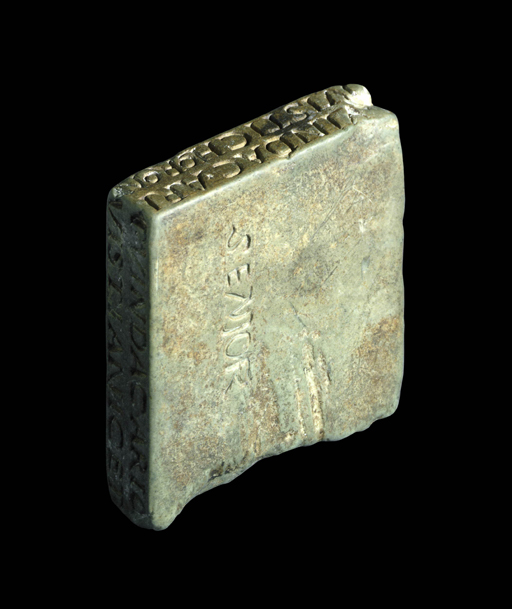1.1 How do you see?
Within the face, the eyes are traditionally thought to be the ‘windows of the soul’, and this phrase goes back to the Roman orator and politician, Cicero. He thought of the senses as the five ‘messengers’ of the soul, taking information to the soul, but only if the soul was able to interpret the information:
We do not even now distinguish with our eyes the things we see; for there is no perception in the body, but, as is taught not only by natural philosophers but also by the experts of medicine, who have seen the proofs openly disclosed, there are, as it were, passages bored from the seat of the soul to eye and ear and nose. Often, therefore, we are hindered by absorption in thought or by some attack of sickness, and though eyes and ears are open and uninjured, we neither see nor hear, so that it can be readily understood that it is the soul which both sees and hears, and not those parts of us which serve as windows to the soul, and yet the mind can perceive nothing through them, unless it is active and attentive. What of the fact that by using the same mind we have perception of things so utterly unlike as colour, taste, heat, smell, sound? These the soul would never have ascertained by its five messengers, unless it had been sole court of appeal and only judge of everything.
The main theory of sight in the ancient world is called the ‘extramission’ theory. Many Greeks and Romans believed that the eyes sent out (the meaning of ‘extramit’) light towards the object the person was observing. More specifically, the pre-Socratics – philosophers who lived in the sixth and fifth centuries, a generation or so before Socrates (c. 470–399 BCE) – mainly believed that the eyes emitted fire, like the rays of the sun. The rays (or fire) mingled with the object viewed and were reflected in the pools of water surrounding the eyes.
Another, less popular, theory was that of ‘intromission’, in which objects sent out little images of themselves which went into the eye of the viewer. The philosopher Democritus (c. 460–370 BCE) argued that all objects gave off ‘effluences’, which was a thin replication of the object made of atoms that moved from the object into the eyes. In this way, vision was seen as rather like touch, but not so effective because the back of the object couldn’t be reached so easily.
Today most people wear contact lenses or reading glasses in addition to us having good lighting to help us to see. In the ancient world, there was clearly concern about poor eyesight, described as ‘cloudy’. One way this is known is that collyrium stamps, used to mark a symbol or the maker’s name on a substance used to make eyewashes, sometimes had an inscription on them to indicate that the medicine they used to ‘stamp’ was used for clarity of vision. One such medicine was cycnum or cycnon. This word is tied to the word cygnet, and, recalling the whiteness of a swan, meant ‘brightness’, which could cure the cloudiness of poor eyesight. One of these stamps was also decorated with a radiate sun, which may also indicate brightness. You’ll look at cures for eye disease later this week, and also see one of these collyria being made.
Blindness affected people in the ancient world. In one of Aristophanes’ comedies written in the fifth century BCE, Wealth, the god of wealth, Ploutos, is presented as being blind and seeking healing in the temple of Asclepius (who you learned about in Health and the gods [Tip: hold Ctrl and click a link to open it in a new tab. (Hide tip)] in Week 1).
Poor sight, however, was not necessarily an issue. In the Week 1 section What is health? Modern definitions, you thought about defining health in terms of the absence of disease, complete wellbeing, or the ability to self-manage. However, what you needed to be able to see in the ancient world was very different from today’s dominance of the written word. To some extent, things would depend on your profession; for example, the Roman writer Celsus (7, Prooemium 4) notes that a surgeon needed ‘sharp and clear’ vision.
People could also be interested in magnifying what they saw. Seneca (Natural Questions, 1.6.5) describes how, if you look at something through a glass ball filled with water, it appears larger. There is no evidence that lenses, as in our spectacles, were used in the ancient world, even though some of the very fine detail on ancient objects, for instance carvings on gems used for rings, may suggest that lenses were being used by specialist craftsmen. Pliny the Elder (Natural History, 29.132 and 37.62–64) says that smaragdi (emeralds and possibly other green stones) and green scarab beetles were restorative for tired eyes and used by gem carvers to restore their vision.
A papyrus fragment from Egypt (P.Oxy. 1.39) hints that some form of vision test might have existed in the ancient world. The fragment dates to the first century, and reads:
C]. Minicius Italus to Celanus, Greetings
… Copy of a release dated and signed in the 12th year of Tiberius Claudius
Caesar Augustus Germanicus Imperator, Pharmouthi
Discharged by Gnaeus Valerius Capito, praefect of upper and lower Egypt, to
Tryphon, son of Dionysus, weaver, with weak sight owing to a cataract
Of the metropolis of Oxyrhynchus.
The examination was conducted in Alexandria
The examination was conducted in Alexandria
The examination was conducted in Alexandria
Scholars disagree about whether Dionysus was a soldier or a civilian and if the discharge was actually because of poor eyesight. The letter implies that people were examined for problems concerning vision. Do you think this would be a routine procedure, or only when a problem was noticed?

